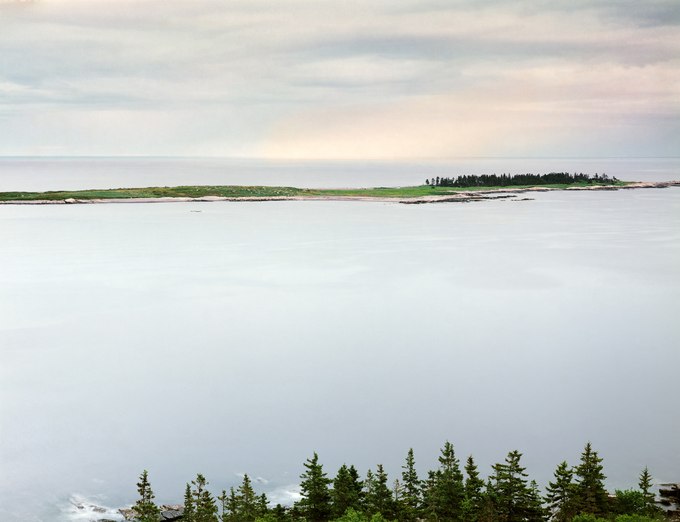The word "Schoodic," a seemingly unique term, may have originated as "Eskwodek," named by the M'ikmaq peoples, meaning "the end" or "point of land." In the mid-19th century, Mark Twain wrote, "The very word schooner is of New England origin, being from the Indian schoon or scoot, meaning to rush, as Schoodic, from scoot and anke, a place where water rushes." Others trace its origins to early northern European roots. Fortunately, all their meanings apply equally to this exposed piece of land where water rushes against the coast.
The view east from The Anvil, a two-hundred-foot granite outcrop, offers a broad panorama of the Gulf of Maine and its coastal islands. It impresses a sense of vastness at the southernmost tip of a peninsula stretching far into the Atlantic from the central Maine mainland. Landfall on Europe's nearest shores is 3000 miles east. In between, the temperamental Atlantic, constantly generating swells, shapes, and erodes this hardened peninsula tirelessly. Initially formed from molten magma deep inside the Earth, it gradually cooled into granite that eventually cracked and, much later, became interspersed with dark, faster-cooling diabase dikes.
One low-lying outcrop of granite, Schoodic Island, lies east of the peninsula. It serves as a nesting sanctuary for American bald eagles and other seabirds—isolated from other wildlife, they can safely congregate. Schoodic Harbor, the deep thoroughfare between the headland and this island, is seasonally dotted with lobster pot buoys checked daily by local lobstermen. On a rare autumn evening, the typically restless ocean takes a respite and lies almost still.

